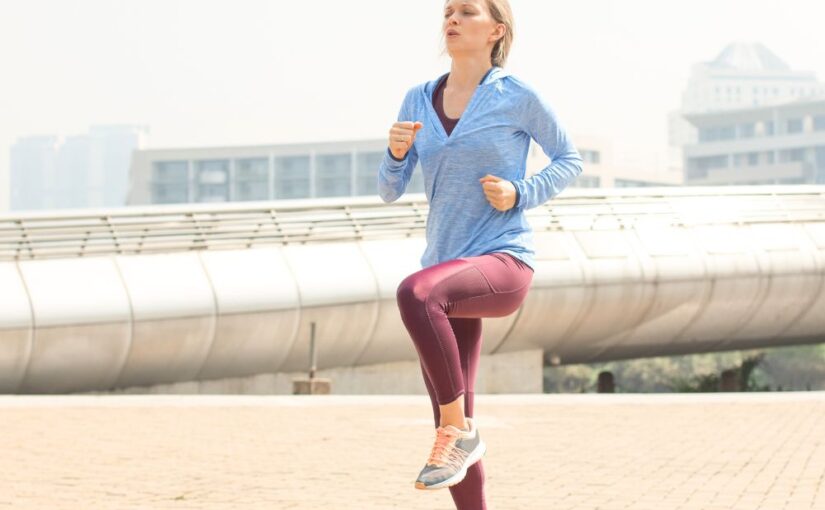Staying active doesn’t always require a gym membership or outdoor space. Many people wonder, how effective is running in place when it comes to maintaining or improving physical fitness. While it may seem too simple to be useful, this accessible form of exercise can offer real benefits when done correctly and consistently.
What is Running in Place?
Without moving forward, running in place replicates the action of conventional running. It’s often included in warm-ups or cardio circuits, but it can also serve as a full-body aerobic workout when performed with intensity and good form.
How Effective is Running in Place? Backed by Science
To understand how effective is running in place scientifically, consider research on aerobic equivalents. According to studies published in the Journal of Sports Science & Medicine, stationary exercises like running in place can elevate heart rate and oxygen consumption to levels similar to treadmill jogging when intensity is matched.
In a comparison of energy expenditure, participants performing 20 minutes of high-knee running in place burned nearly the same number of calories as those jogging on a treadmill at a moderate pace. This makes it a viable cardio alternative, particularly for individuals with limited space or mobility restrictions.
Benefits of Running in Place
- Improves Cardiovascular Health: Like other forms of aerobic exercise, it strengthens the heart, reduces blood pressure, and supports lung function.
- Enhances Balance and Coordination: Engaging core muscles to stay upright helps improve stability over time.
- Supports Weight Loss: A 150-pound person can burn 240–300 calories in 30 minutes depending on intensity.
- Boosts Mood and Mental Clarity: Exercise-induced endorphins help reduce stress and improve focus.
- Adaptable and Low Barrier to Entry: No gear, special skills, or large space is required.
Sample Beginner Routine: Running in Place Workout (15–20 Minutes)
Warm-Up (2 minutes):
- March in place
- Arm circles
- Shoulder rolls
Main Workout (12–15 minutes):
- 1 min regular running in place
- 30 sec high knees
- 30 sec rest
- 1 min butt kicks
- 1 min jumping jacks
- 30 sec rest
- Repeat the above sequence 2x
Cool Down (3 minutes):
- Slow march in place
- Deep breathing
- Light stretching (quads, calves, hamstrings)
Common Mistakes to Avoid
- Poor Posture: Excessive forward or backward leaning might cause lower back discomfort and decrease performance.
- Flat Footed Steps: Always stay light on your feet and engage your calves for better bounce and joint protection.
- Monotony: Repeating the same motion daily can lead to performance plateaus over time.. Add variation like arm movements or interval timing.
- Ignoring Progression: Gradually increase intensity and duration to avoid fitness plateaus.
How Effective is Running in Place Compared to Other Cardio?
How effective is running in place compared to jogging outdoors or using a treadmill? While it lacks terrain variety and natural resistance, it can still stimulate similar cardiovascular improvements if performed at sufficient intensity. It’s particularly useful for:
- Beginners building endurance
- People recovering from injury (under guidance)
- Those working out in tight indoor spaces
- Individuals supplementing a larger fitness routine
Calorie Burn Comparison (Running in Place vs. Other Cardio)
| Activity | Calories Burned (30 min, 150 lb person) |
|---|
| Running in Place | 240–300 |
| Treadmill Jogging | 270–330 |
| Jump Rope | 300–400 |
| Stationary Biking | 210–250 |
| Brisk Walking | 140–190 |
Conclusion
So, how effective is running in place for your fitness goals? It turns out—very. When done with intention, good form, and consistency, running in place can improve heart health, boost endurance, burn calories, and even enhance mental clarity. It’s a time-efficient, space-saving option that can seamlessly fit into your daily routine, regardless of your fitness level or environment.
Frequently Asked Questions (FAQ)
While outdoor jogging provides more resistance and terrain variation, running in place can offer comparable cardiovascular benefits when done at a high intensity. It’s especially effective for calorie burning and endurance when space or weather limits outdoor activity.
Yes. When paired with a healthy diet and done consistently, running in place can contribute to weight loss by burning calories and improving metabolism. High-intensity intervals enhance fat burning even further.
Most people benefit from 20–30 minutes of moderate to vigorous activity, 3–5 times a week. Consistency and gradually increasing intensity are key to seeing improvements in endurance, weight, and muscle tone.
Running in place primarily strengthens your lower body and core, but it’s more focused on endurance than muscle mass. To build muscle, you might pair it with resistance training or bodyweight exercises like squats and lunges.
It’s generally lower-impact than jogging outdoors, especially on soft surfaces like carpet or exercise mats. However, proper form is crucial. Wearing supportive shoes and keeping knees slightly bent can reduce strain on joints.

